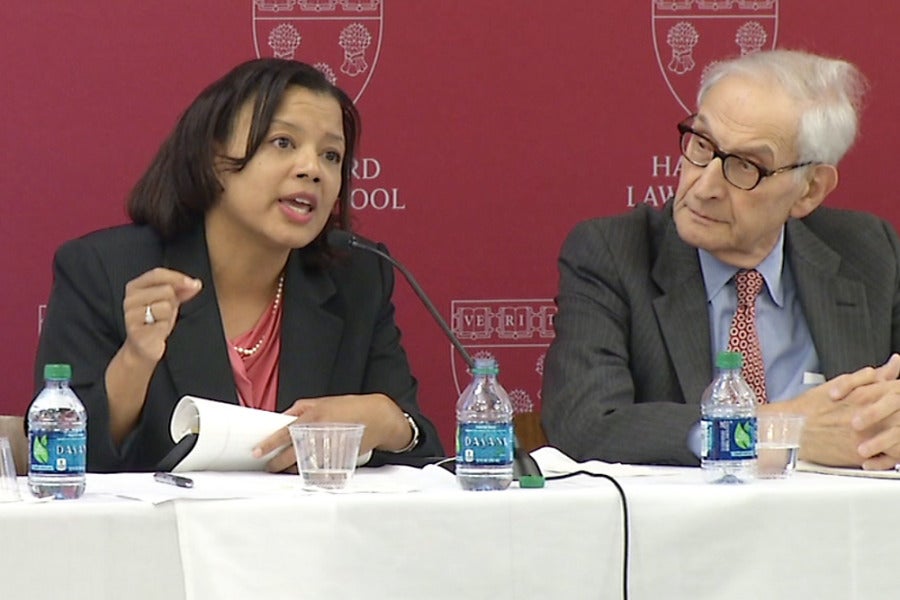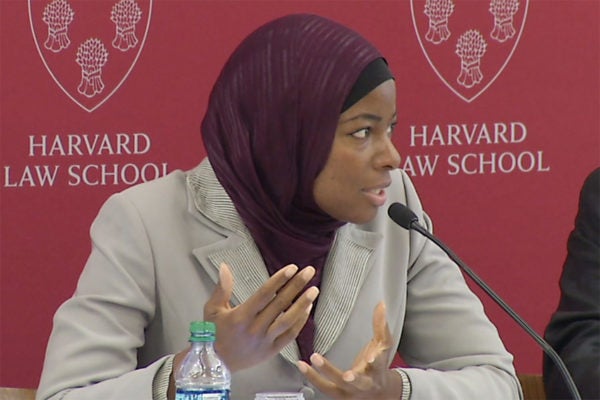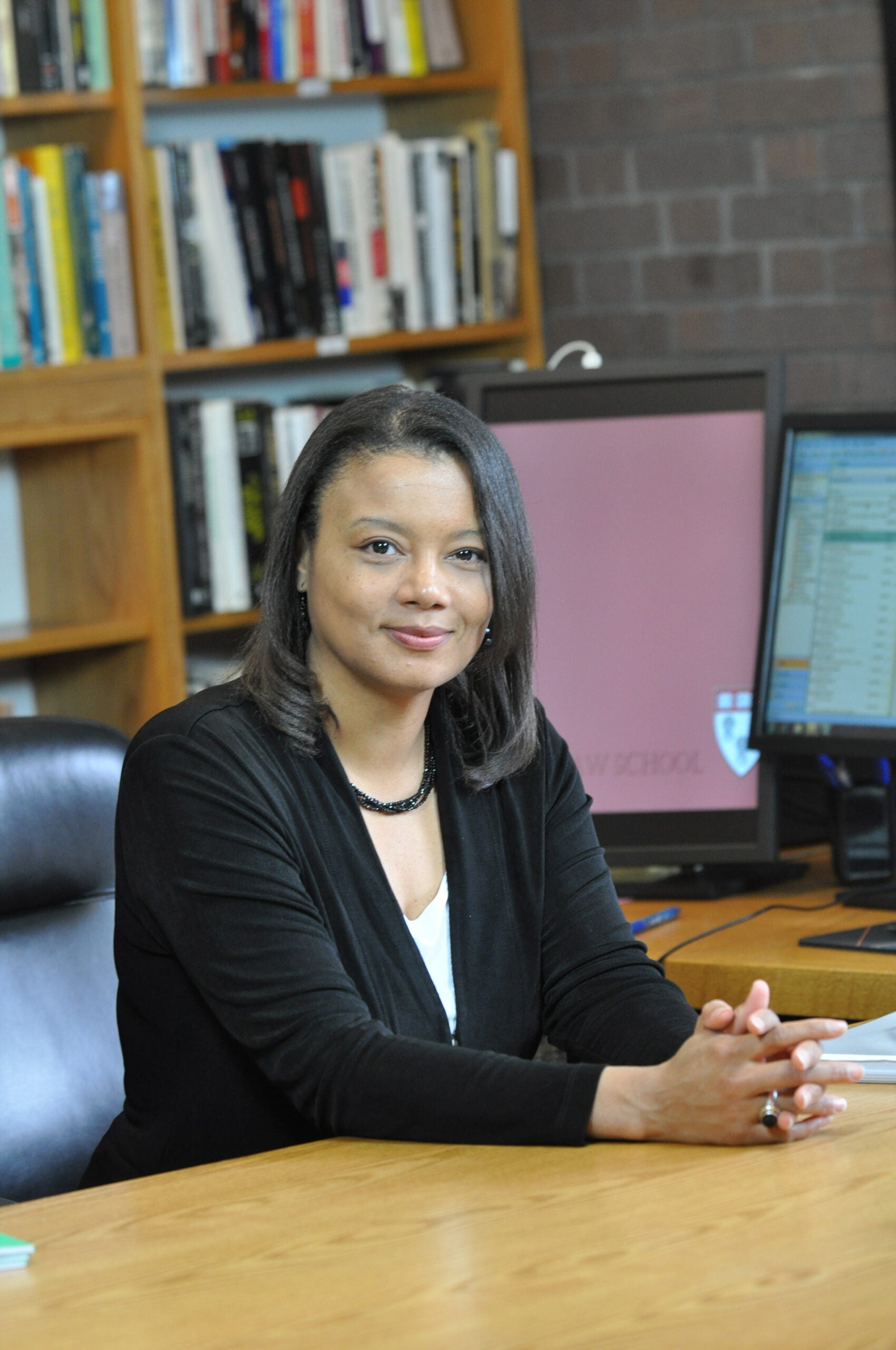How much of what the Supreme Court is doing is neutral, apolitical and how much of it is shaped by the justices’ political or policy values? That was the theme of a panel discussion at Harvard Law School on Sept. 22.
Moderated by Professor John Manning, five Harvard Law School professors, Tomiko Brown-Nagin, John Coates, Richard Fallon, Charles Fried and Intisar Rabb, assessed last year’s Supreme Court decisions and shared their thoughts on those rulings.
According to Rabb, a specialist in Islamic Law and legislation and theories of statutory interpretation, statutory interpretation cases vividly reflect the central debates about how to interpret text versus purpose, letter versus spirit, structure versus values. She discussed how two high-profile statutory cases from this term, Abramski v. United States and Bond v. United States, demonstrate how “the Supreme Court is moving away from textualism and statutory interpretation cases where there are contested values amongst the justices in a particular case or arc of cases.” Rabb, who joined the HLS faculty last January, is co-director of the Islamic Legal Studies Program at Harvard Law School, with Professor Kristen Stilt.

Professors Tomiko Brown-Nagin and Charles Fried
Fried, a former U.S. Solicitor General and an expert on constitutional law and contracts, examined cases before the Court that involved the political process. In the ’70s and ’80s, said Fried, the Court reached “settlements” in cases involving abortion, affirmative action, and the death penalty.

HLS Professor Intisar Rabb
Fried said that while those settlements were often “incoherent, doctrinally vulnerable and somewhat illogical,” they represented the position of the country on those issues. A similar settlement on campaign finance was established in the 1976 Supreme Court case Buckley v. Valeo, which struck down several provisions in the 1974 Amendments to the Federal Election Campaign Act on First Amendment grounds, but upheld the provision limiting the size of individual contributions to campaigns. This term’s decision in McCutcheon v. Federal Election Commission changed the previous “settlement” by vastly expanding the limit on individual contributions. “That, I would suggest to you, is the beginning, and really quite far down the road, to the unraveling of the 1976 settlement, and that’s alarming,” said Fried.
Tomiko Brown-Nagin, the Daniel P.S. Paul Professor of Constitutional Law and an award-winning legal historian, provided an update on the Court’s equality jurisprudence. Brown-Nagin reviewed the decision in Schuette v. BAMN, an affirmative action case that was significant for five different opinions among the justices that answered the question of what is discrimination and when does racial disadvantage matter from a constitutional perspective.
Professor of Law and Economics John Coates, who focuses on corporate and securities law, discussed a recent securities law case before the Court Halliburton Co. v. Erica P. John Fund, Inc., describing the Court’s unpredictable rulings on business law cases. The exception, said Coates, is when corporations, as in Hobby Lobby, are at the center of a constitutional dispute that has broader political and individual rights implications. For those cases, said Coates, the justices get “remarkably predictable” in their approach to very complicated corporate law topics. He is the research director of Harvard Law School’s Center on the Legal Profession.
Richard Fallon, the Ralph S. Tyler, Jr., Professor of Constitutional Law, talked about administrative law and federal courts questions before the Court last term. According to Fallon, the justices are aware that the Court is perceived as a political court, and many justices dislike the idea that they are being perceived as ideological, political and divided. He believes some of the things that they do may reflect a strategy to combat that appearance.
